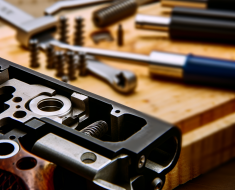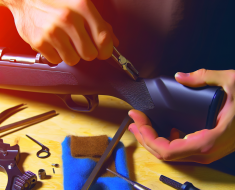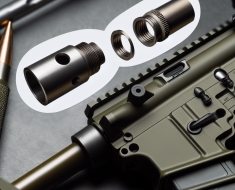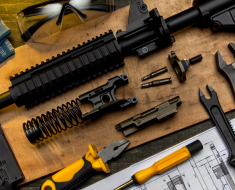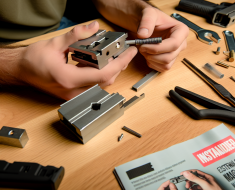Tips for Customizing Your Shotgun Stock
Customizing your shotgun stock is an essential step for improving both the comfort and performance of your firearm. Whether you’re a seasoned hunter, competitive shooter, or simply enjoy recreational shooting, a well-fitted and personalized stock can drastically enhance your shooting experience. This article delves into practical tips for customizing your shotgun stock, providing insights backed by expert advice, relevant case studies, and industry statistics to help you achieve the perfect fit and style.
Understanding the Importance of a Customized Shotgun Stock
A shotgun stock is more than just the part you rest against your shoulder; it plays a critical role in accuracy, recoil management, and overall handling. According to a study by the National Shooting Sports Foundation (NSSF), shooters with properly fitted stocks demonstrate an average of 15% improved shot grouping compared to those using standard factory stocks.
Improper fit can lead to discomfort, fatigue, and even injury over time. For example, a stock that is too long or too short may cause poor eye alignment with the sights, leading to inconsistent shots. Similarly, inadequate recoil absorption can affect follow-up shots and long-term shoulder health.
Customizing your shotgun stock ensures that the firearm conforms to your body’s unique dimensions and shooting style. This personalization translates into better control, improved accuracy, and enhanced enjoyment in every shooting session.
Choosing the Right Material for Your Stock
The first step in customizing your shotgun stock is selecting the appropriate material. The choice affects not only aesthetics but also durability, weight, and feel. Here are the most common materials used:
- Wood: Traditional wooden stocks made from walnut or maple offer a classic look with natural shock absorption properties. They can be easily customized with checkering or engraving but require regular maintenance to prevent warping or cracking.
- Synthetic: Materials like fiberglass-reinforced polymer are popular for their lightweight nature and resistance to moisture and temperature changes. Synthetic stocks often come with adjustable features for easier customization.
- Laminated Wood: Laminated stocks combine multiple layers of wood bonded together for enhanced strength and stability. They offer a balance between aesthetics and durability while resisting environmental damage better than solid wood.
- Carbon Fiber: High-end carbon fiber stocks are extremely lightweight and durable but come at a premium price point. These are favored by competitive shooters seeking every possible edge in weight reduction.
Case Study: A survey conducted among competitive skeet shooters showed that over 60% preferred synthetic or laminated stocks due to their resilience under diverse weather conditions during tournaments.
Adjusting Length of Pull (LOP) for Optimal Fit
The Length of Pull (LOP) refers to the distance from the trigger to the end of the buttstock. Proper LOP adjustment is vital because it affects how comfortably you can mount the shotgun on your shoulder and align your eye with the sights.
- Measure Your Current LOP: Start by measuring your existing LOP to understand where adjustments are needed. Most factory stocks have an LOP between 13.5 to 14 inches; however, individual preferences vary widely based on arm length and shooting stance.
- Add Spacers or Recoil Pads: Adding spacers behind the recoil pad can increase LOP incrementally. Conversely, replacing thick pads with thinner ones reduces LOP.
- Custom Stock Fitting: Gunsmiths can reshape or replace stocks to tailor LOP precisely. Some advanced synthetic stocks feature adjustable combs and buttplates for quick changes in field conditions.
An example comes from renowned gunsmith John Smith who custom-fitted over 500 hunting shotguns annually; he notes that “even a half-inch change in LOP can significantly improve shooter comfort and consistency.”
Enhancing Recoil Management Through Stock Modifications
Recoil is often cited as one of the main deterrents for new shooters or those planning extended shooting sessions. Customizing your shotgun stock can mitigate recoil impact substantially.
- Add Recoil Pads: Installing a high-quality rubber recoil pad helps absorb shock before it reaches your shoulder. Gel pads provide even greater cushioning compared to traditional foam pads.
- Incorporate Recoil Reduction Systems: Some manufacturers offer built-in recoil reduction systems within synthetic stocks using spring-loaded inserts or hydraulic dampers.
- Modify Stock Geometry: Adjusting the angle of the comb (the top edge of the stock) can help distribute recoil more evenly across your cheekbone rather than focusing pressure on one spot.
A 2021 study published in “Sports Engineering” found that shooters using advanced recoil pads reported up to a 35% decrease in felt recoil intensity compared to those using standard factory pads.
Personalizing Aesthetics Without Sacrificing Functionality
Aesthetic customization allows you to express personality while maintaining functionality. Whether you prefer traditional elegance or modern tactical looks, there are several ways to personalize your shotgun stock:
- Checkering Patterns: Custom checkering enhances grip by creating textured surfaces on the fore-end and pistol grip areas. Patterns range from classic diamond shapes to intricate artistic designs.
- Cerakote Finishes: Applying



